What’s the real difference between PTO and vacation time?
It’s a common question, especially when trying to make sense of company policies.
At first glance, the terms seem interchangeable, but there’s more to it.
Understanding how they work not only helps employees plan time off but also keeps operations running smoothly for HR and management.
So, what sets them apart, and why does it matter for both employees and employers?
Let’s break it down and clear up the confusion:
What is PTO?
PTO, or Paid Time Off, is a flexible pool of hours that employees can use for a variety of personal reasons.
No matter if it's for a vacation, taking a mental health day, attending a doctor’s appointment, or even handling jury duty, PTO gives employees the freedom to decide how to use their time off without specifying a reason.
It’s a simple way for companies to manage different types of leave under one umbrella. Plus, employees get more control over their time away from work.
What is vacation?

Vacation time is a dedicated break from work, specifically for rest and relaxation. It’s typically scheduled in advance and is meant for leisure, like traveling or spending time away from daily responsibilities.
Unlike PTO, which can be used for various reasons, vacation is purely for stepping away from work to recharge, e.g. during a beach getaway or a staycation.
It’s the time when you can unplug from your inbox and focus on taking a real break.
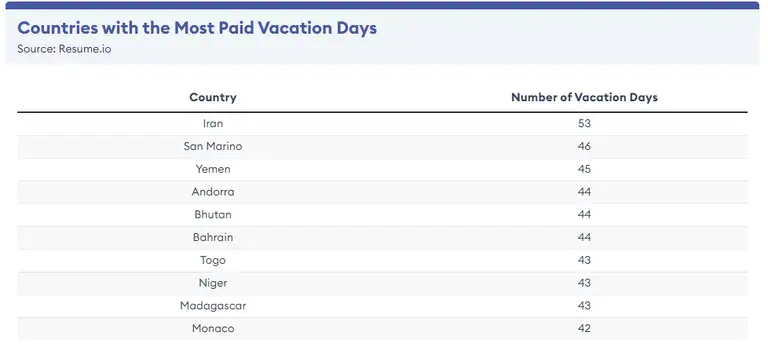
PTO vs vacation: similarities and differences
Now, let’s break down the key similarities and differences between PTO and vacation:
Flexibility - the all-in-one vs. the classic
PTO: Paid time off (PTO) is flexible because it covers everything - vacation, sick days, or personal leave. Need time off for a doctor’s visit or a vacation? PTO lets you use your time however you need.
Vacation: Vacation leave is reserved for planned trips or breaks. It’s great for scheduled getaways but isn’t as flexible when you need last-minute personal or sick days.
Tracking hours - streamlined or separate?
PTO: With PTO, you track all your time off in one place. No need to worry about managing different categories like sick days or vacations.
Vacation: Vacation time is tracked separately from other types of leave, such as sick days or personal leave. While it can provide a clear distinction between types of time off, it requires more organization.
Unused time - carry it or lose it?
PTO: Depending on your company’s policy, unused PTO can be rolled over, cashed out, or lost at the end of the year. You’ll want to check your company’s rules to make the most of it.
Vacation: Similar to PTO, vacation time may have different policies for rolling over or cashing out unused days, so it’s important to be aware of your specific vacation leave guidelines.
Well-being - PTO for the win?
PTO: Unlimited PTO policies can be great for your well-being. They let you take time off when you need it (e.g. to take care of your mental health or when you're sick), without worrying about running out of days.
Vacation: Vacation time is perfect for recharging, but it doesn’t offer the same flexibility for unplanned absences like mental health or sick days.
Employer benefits - planning ahead vs. playing catch-up
PTO: PTO can lead to fewer unscheduled absences since employees can take time off as needed. This can help keep things running smoothly and reduce the risk of burnout.
Vacation: Employers benefit from being able to plan around scheduled vacation leave, but it can be tricky if employees hesitate to use their sick days, which might lead to them working when they’re unwell.
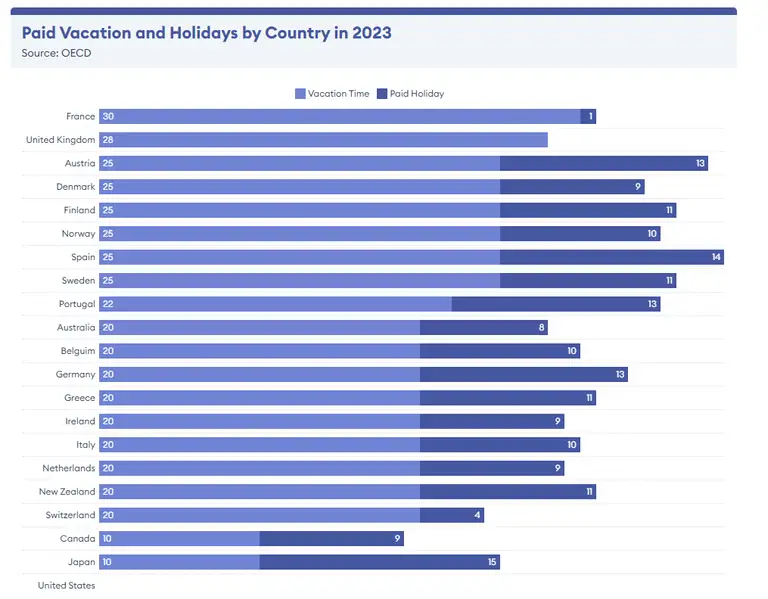
Top PTO and vacation tips for HR managers & employers
To help you navigate both PTO and vacation time in your company, we've put together a bunch of tips.
Check them out now:
#1 Develop a PTO policy that motivates employees to use their time off regularly, rather than saving it.
#2 Encourage a mix of vacation days and short breaks to keep productivity high.
#3 Offer sick leave separate from PTO so that employees don't come to work ill - the fewer sick days employees take from their PTO, the better.
#4 Let employees schedule shorter breaks, like personal days, to handle urgent matters.
#5 Implement a "use it or lose it" approach for unused vacation days to promote balance.
#6 Track leave with software to avoid the hassle of separately tracking hours.
#7 Allow flexibility in planning sick time, like half days for medical appointments.
#8 Let employees request time off without needing to explain personal reasons.
#9 Encourage employees to take their paid vacation in smaller chunks if longer breaks aren’t possible.
#10 Promote a culture that discourages working during vacation days.
#11 If you offer unlimited PTO, tell your teams to still plan and avoid last-minute requests.
#12 Make it easier for employees to plan around business needs by setting clear vacation blackout dates.
#13 Create a policy to address what happens when employees don’t use their unused vacation days.
#14 Try to convince employees to plan separate vacation time during less busy work periods.
#15 Offer incentives for employees who regularly take personal and sick time when needed - that's how you'll minimize burnout.
#16 Help employees manage their time by offering flexible scheduling for personal days.
#17 Implement team collaboration to balance workloads when people are on vacation leave.
#18 Offer training to managers on how to handle frequent or unexpected sick leave.
#19 Provide clarity on how PTO accrual works so employees understand how much paid vacation they can take.
#20 Review your PTO policy regularly to stay competitive with industry standards.
BONUS: FREE TIME OFF REQUEST FORM TEMPLATE FOR HR
Manage unused PTO and paid vacation with Unrubble
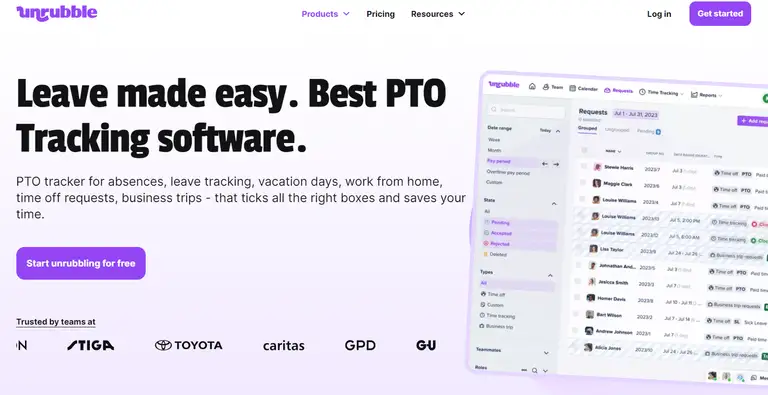
Keeping track of unused PTO and paid vacation can be a real headache.
That’s where Unrubble steps in. Our PTO Tracker helps you stay on top of absences, vacations, and even work-from-home days, all from one easy-to-use dashboard.
You won’t lose sleep over missed requests, mismanaged time off, or payroll errors.
With everything in one place, you can say goodbye to double-bookings and confusion.
Why Unrubble?
Unrubble it’s built for teams like yours that need real-time insights and smart management tools that work in the background.
Time-off requests? Handled. Vacation balances? Tracked. Approvals? Done in seconds.
It’s quick, automatic, and does it all in just 4 steps:
Step 1: Choose who the PTO or vacation is for:

Step 2: Choose time off type - vacation, sick leave, PTO or something else?:

Step 3: Configure the details, such as dates:
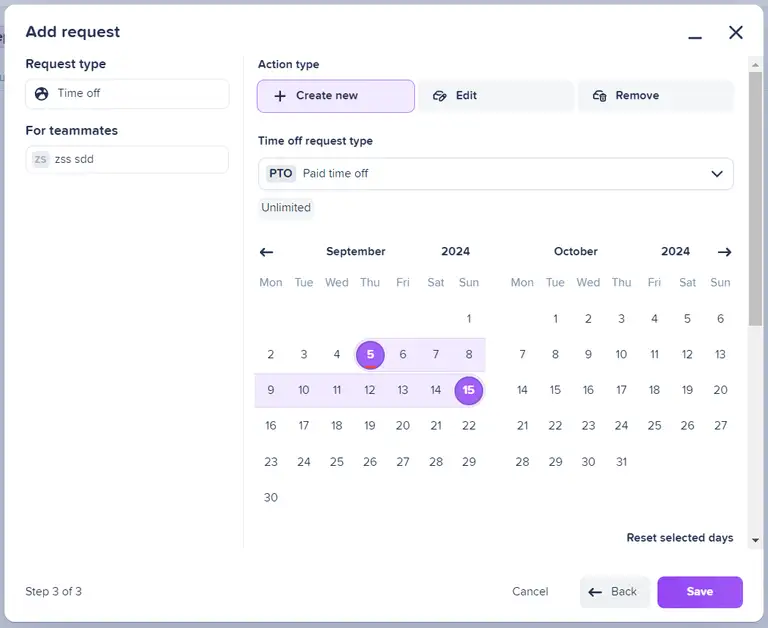
Step 4: Send the request and it's done:
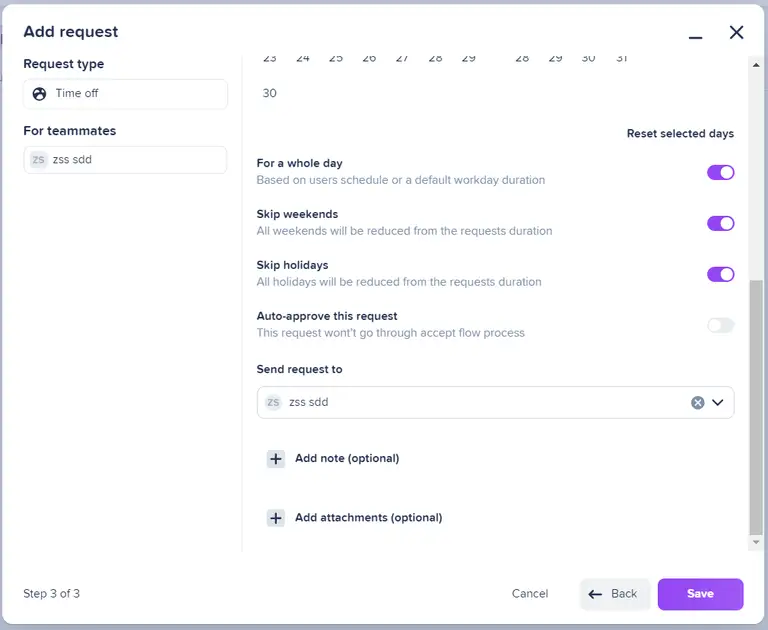
What else can we do for you?
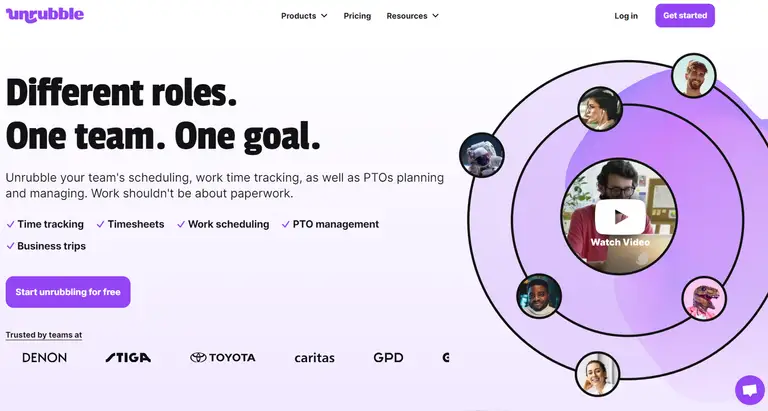
Unrubble isn't just a PTO tracker.
It's your all-in-one solution for managing everything from employee scheduling to business trips.
Think of it as a powerhouse that makes work more pleasant for both managers and employees.
With our tool, you can:
- Track time with precision using our easy-to-use interface, letting you monitor work hours, breaks, overtime, and more.
- Create smart schedules with real-time updates, shift notes, and automatic notifications.
- Manage timesheets without the hassle of manual entries. Everything happens in real time, so no more delays or errors.
- Organize business trips in a way approvals and travel policies are properly taken care of.
- Use the Mobile Time Clock, complete with face recognition and geo-fencing for secure, easy clock-ins.
- Motivate employees with our Employee Self-Service App that lets them request PTO, manage schedules, and update personal info, all from their mobile device.
Unrubble offers a solution for every step of your team's workday. Tedious tasks like payroll, scheduling, and tracking are a piece of cake.
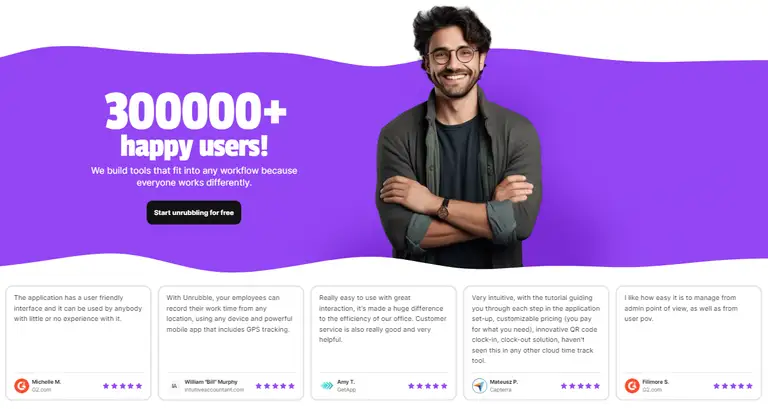
Who are our users?
We’re trusted by companies big and small - Toyota, Denon, Valeo, and many others.
Whether you’re managing a small team or a global workforce, Unrubble fits right into your workflow.
If you're ready to stop chasing PTO requests, start unrubbling for free today!








